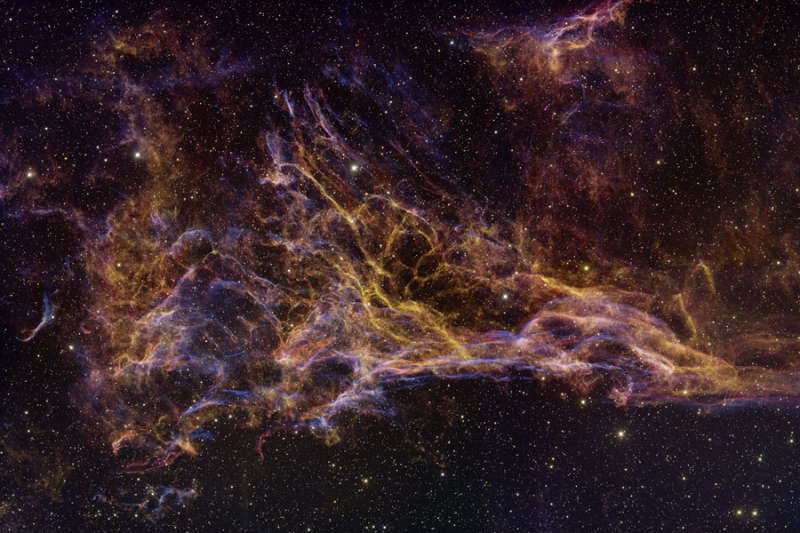
|
Explanation: Wisps like this are all that remain visible of a Milky Way star. About 7,500 years ago that star exploded in a supernova leaving the Veil Nebula, also known as the Cygnus Loop. At the time, the expanding cloud was likely as bright as a crescent Moon, remaining visible for weeks to people living at the dawn of recorded history. Today, the resulting supernova remnant has faded and is now visible only through a small telescope directed toward the constellation of Cygnus. The remaining Veil Nebula is physically huge, however, and even though it lies about 1,400 light-years distant, it covers over five times the size of the full Moon. In images of the complete Veil Nebula, studious readers should be able to identify the Pickering's Triangle component pictured above, a component named for a famous astronomer and the wisp's approximate shape. The above image is a mosaic from the 4-meter Mayall telescope at the Kitt Peak National Observatory located in Arizona, USA.
|
January February March April May June July August September October November December |
| ||||||||||||||||||||||||||||||||||||||||||||||||
NASA Web Site Statements, Warnings, and Disclaimers
NASA Official: Jay Norris. Specific rights apply.
A service of: LHEA at NASA / GSFC
& Michigan Tech. U.
Based on Astronomy Picture
Of the Day
Publications with keywords: Veil Nebula
Publications with words: Veil Nebula
See also:
- APOD: 2025 June 2 Á Veil Nebula: Wisps of an Ancient Supernova
- APOD: 2024 September 4 Á NGC 6995: The Bat Nebula
- APOD: 2023 November 21 Á Flemings Triangular Wisp
- APOD: 2023 October 18 Á Dust and the Western Veil Nebula
- Supernova Remnant: The Veil Nebula
- NGC 6995: The Bat Nebula
- Flemings Triangular Wisp
